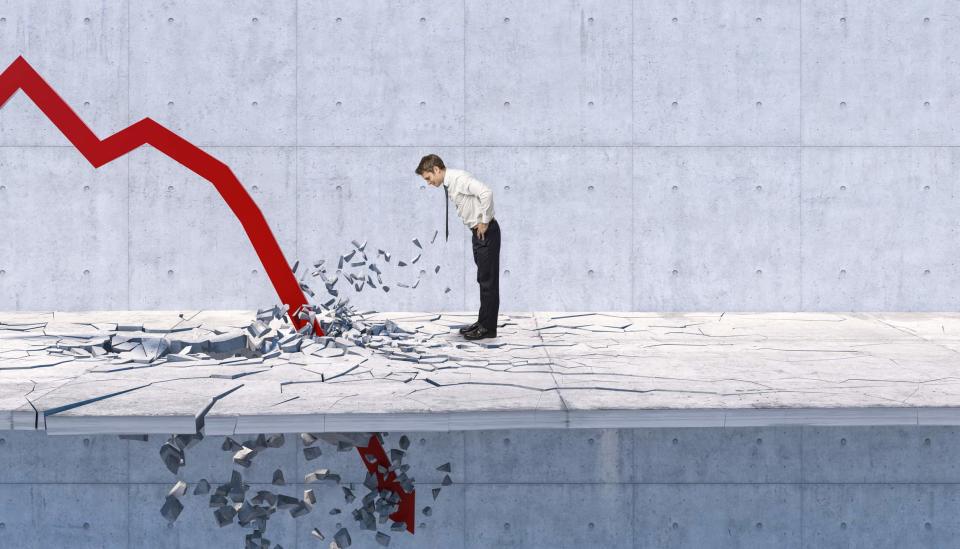Why Shopify Stock Fell -68.57% in 2022

Written by Tony Dong at The Motley Fool Canada
Remember the explosive technology sector-driven bull market of 2020 and 2021? When interest rates were slashed to rock bottom during the COVID-19 pandemic, shares of companies like Shopify (TSX:SHOP) soared to outrageous highs, as investors piled into the market.
At its peak, SHOP was trading at around $213 per share on November 19 (adjusted for its latter 10-1 stock split). Today in January 2023, investors can pick up a share for around $48. Over the last year, shares of SHOP are down -68.57%, while the S&P/TSX 60 index is down a mere 9%. What happened?
Why Shopify fell: Macroeconomic
In short, it was a classic example of macroeconomic risk impacting a growth stock from a heavily cyclical sector (technology). Hindsight is 20/20, but I’m surprised such few people realized low interest rates and stimulus cheques couldn’t last forever.
Macroeconomic risk is a broad category that encompasses various negative effects stemming from a slowing or poorly performing economy. An example we saw in 2022 was rising interest rates. All else being equal, rate hikes disincentivize spending, which is intended to help cool inflation.
The downside of this is that many non-essential companies (e.g., non utilities, healthcare, or consumer staples) see reduced demand for their products and services as budgets tighten. This leads to lower margins, earnings, and thus share valuations.
A growth stock like Shopify is only worth as much as another investor (and the market as a whole) is willing to pay for its perceived future growth. If the macroeconomic environment becomes no longer conducive to this growth, buying pressure dissipates, and share prices fall.
Why Shopify fell: Company-specific
I could get into the nitty-gritty of SHOP’s 2022 earnings reports to understand its underperformance, but I think a more holistic approach would be to analyze the letter penned by Shopify’s chief executive officer Tobias Lütke on July 26, when the company announced broad layoffs.
Lütke is much more familiar with the intricacies of SHOP than any analyst will ever be, and his letter is written from a rather candid and honest perspective of self-reflection. I’ve linked it here but have highlighted some key excerpts that I think shed light into why SHOP’s share price tanked the way it did:
“Shopify has always been a company that makes the big strategic bets our merchants demand of us — this is how we succeed. Before the pandemic, ecommerce growth had been steady and predictable. Was this surge to be a temporary effect or a new normal? And so, given what we saw, we placed another bet: We bet that the channel mix — the share of dollars that travel through ecommerce rather than physical retail – would permanently leap ahead by 5 or even 10 years.”
Translation: Lütke and the team bet their growth projections and expansion plans on overtly optimistic forecasts and overextended.
“It’s now clear that bet didn’t pay off. What we see now is the mix reverting to roughly where pre-Covid data would have suggested it should be at this point. Still growing steadily, but it wasn’t a meaningful 5-year leap ahead. Our market share in ecommerce is a lot higher than it is in retail, so this matters. Ultimately, placing this bet was my call to make and I got this wrong.”
Translation: The macroeconomic environment did not pan out the way the management team predicted, and now SHOP is facing lower demand for its services and slower growth prospects.
Alternatives to Shopify
I’m not bullish on SHOP. In my opinion, it combines company-specific risk (investing in a single stock) with sector-specific risk (betting on the cyclical tech sector when rates are still rising and recession risks are afoot). If you are set on investing in tech, I suggest an exchange-traded fund (ETF) for diversification.
My pick here is iShares S&P/TSX Capped Information Technology Index ETF. This ETF holds 27 Canadian tech sector stocks, with SHOP coming in at 22.78% of its portfolio. You get exposure to SHOP but also to other tech sector stocks for a more diversified, long-term holding.
The post Why Shopify Stock Fell -68.57% in 2022 appeared first on The Motley Fool Canada.
Should You Invest $1,000 In Shopify?
Before you consider Shopify, you'll want to hear this.
Our market-beating analyst team just revealed what they believe are the 5 best stocks for investors to buy in December 2022 ... and Shopify wasn't on the list.
The online investing service they've run for nearly a decade, Motley Fool Stock Advisor Canada, is beating the TSX by 16 percentage points. And right now, they think there are 5 stocks that are better buys.
See the 5 Stocks * Returns as of 12/13/22
More reading
Brookfield Asset Management Spin-Off: What Investors Need to Know
Passive Income: 4 Safe Dividend Stocks to Own for the Next 10 Years
Fool contributor Tony Dong has no position in any of the stocks mentioned. The Motley Fool has positions in and recommends Shopify. The Motley Fool has a disclosure policy.
2023

 Yahoo Finance
Yahoo Finance 